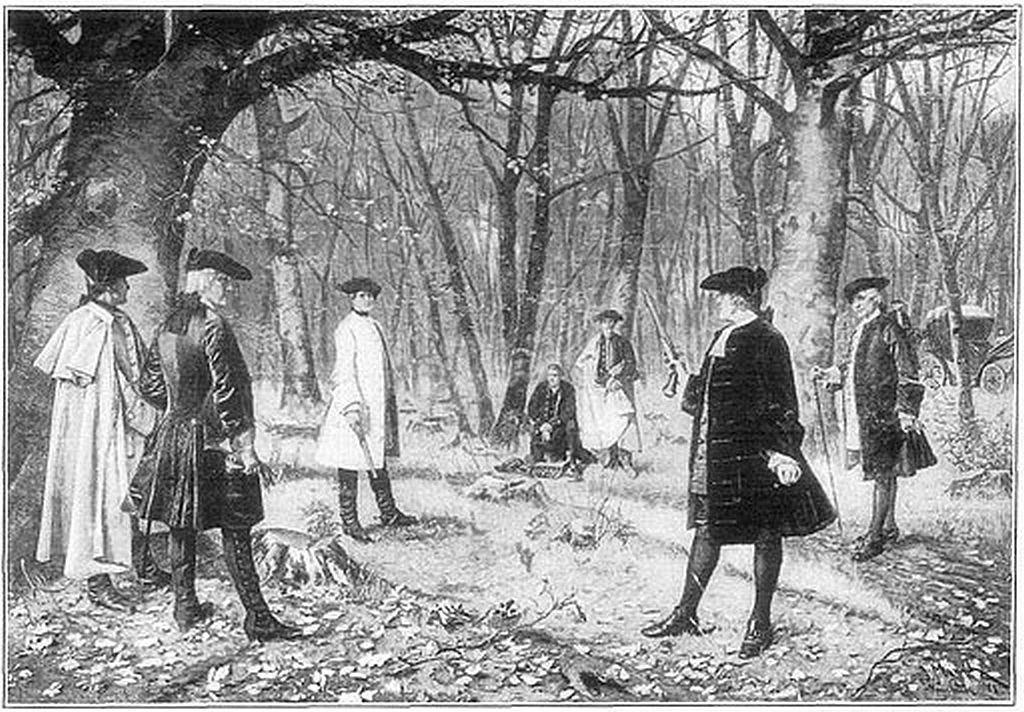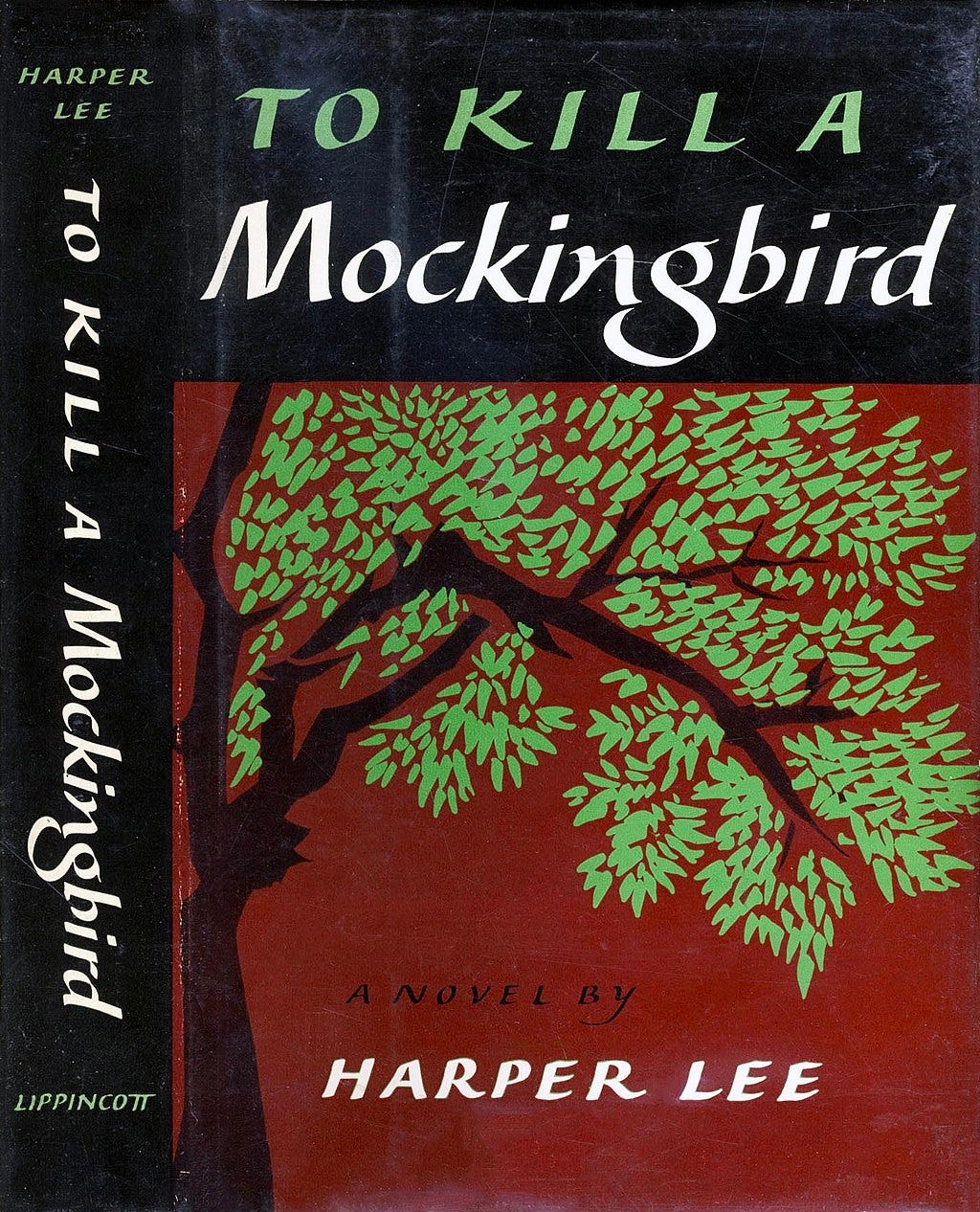1804 — Burr-Hamilton Duel
public domain image from wikimedia commons
Prior to Ron Chernow’s 2005 biography of Alexander Hamilton (1755 or 1757-1804), which led to the überpopular play Hamilton (which debuted ten years after Chernow’s biography and ten years ago, in 2015), the Aaron Burr-Alexander Hamilton duel, which led to Hamilton’s demise, was not well-known among the history-averse.
Aaron Burr (1756-1836) was at the time the Vice President of the United States. Hamilton had been an important figure, serving under George Washington in the Revolutionary War and while Washington was President, and also being a fervent proponent of the Constitution and instrumental in its adoption.
Burr and Hamilton had been at each other’s throats over political differences and personal acrimony for quite some time when Burr, feeling belittled by Hamilton’s criticisms of him, challenged Hamilton to a duel to supposedly defend his honor (presumably Burr had never heard “sticks and stones … words can never harm me” nor given heed to Jesus’ admonition to “turn the other cheek).
As the duel commenced in the early morning on this date in 1804, accounts vary as to whether Hamilton fired into the air or fired at Burr and missed. What is not debatable is that Burr then shot Hamilton in the stomach. The gut-shot pol died the next day. Burr was charged with murder, but returned to Washington, D.C., immune (as Vice President) to being prosecuted.
Hamilton’s eldest son Philip had been killed in a duel three years previously (in 1801) a few miles from where his father was fatally wounded. Lending credence to Alexander having fired in the air with his first shot (something that was done in an attempt to stop a duel, with the expectation that the other duelist would follow suit), he counseled his son to do that very thing.
As had his father, Philip was struck by a bullet during the duel, and died the next day. Philip’s mother/Alexander’s wife, Elizabeth Schuyler Hamilton, was three months pregnant at the time. She lived to be 97 years old.
Questions: Have you read Chernow’s book? Have you seen the play Hamilton? How did the rest of Burr’s life turn out?
1914 — The Bambino Brings His Arm and Bat to the Bigs
public domain images from wikimedia commons
George Herman “Babe” (aka “The Bambino” and “The Sultan of Swat”) Ruth (1895-1948) was at first better known as a pitcher than a hitter. But it was as a batsman that he eventually made his greatest mark, setting a record for most career homeruns (714) that wasn’t exceeded until “Hammerin’” Hank Aaron hit his 715th in 1974.
Some people like to point out that Ruth struck out more often than he hit a homerun. That’s true; in fact, he struck out almost twice as many times (1,330 to 714). But everybody strikes out more often than they hit homeruns, both literally (in baseball) and figuratively (in life) — even if they are blind to their own foibles and failures.
It was on this date in 1914, less than three weeks before the beginning of World War 1, that Ruth played in his first major league game, for the Boston Red Sox. The Red Sox won the game, with Ruth pitching seven innings for the win. In that first game in the majors for him, he only batted twice, and did not get so much as a single.
Babe had actually first been a member of his hometown Baltimore Orioles, but was quickly traded to the Red Sox (who later traded sold him to the New York Yankees, where he spent most of his career).
George got the nickname “Babe” from his Red Sox teammates because of his being naive (or so they thought).
The last team Ruth played for was the Boston Braves (who later moved to Milwaukee before relocating again, to Atlanta, where Hank Aaron played).
Questions: If hitting power comes from the legs, as is commonly said, how is it that Ruth had such spindly ones? Why did Ruth spend years in an orphanage although his parents were still living?
1960 — “To Kill a Mockingbird” Published
public domain image from wikimedia commons
On this date in 1960, Harper Lee’s coming-of-age novel To Kill a Mockingbird was published. It is set in the American deep South (Alabama, to be precise) during the “Great” Depression and the Jim Crow era in that section of the Country.
After relocating from Monroeville, Alabama to New York City to try to make it as a writer (where her childhood friend Truman Capote already had), friends gave Lee a cash gift equivalent to a year’s wages so that she could focus more on her writing, the result of which was the work here under discussion.
To Kill a Mockingbird won the Pulitzer Prize for fiction in 1961 and has sold tens of millions of copies worldwide.
On a personal note, TKaM is one of my favorite books; the film adaptation of it is likewise one of my favorite movies, and it is very faithful to the book, unlike many other book/movie pairings (such as — fortunately, in that case — Forrest Gump: terrible book, great movie).
Questions: Have you read To Kill a Mockingbird? If so, how many times (I have read it in English [multiple times], German, and Spanish)? What connection did Harper Lee have with Truman Capote? What was Lee’s involvement with Capote’s 1966 book In Cold Blood? Have you seen the movie version of To Kill a Mockingbird starring Gregory Peck and featuring a youngish Robert Duvall in his first movie role? What link is there between Mary Badham, the actress who played Jean Louise “Scout” Finch in the film and the movie Saturday Night Fever?







